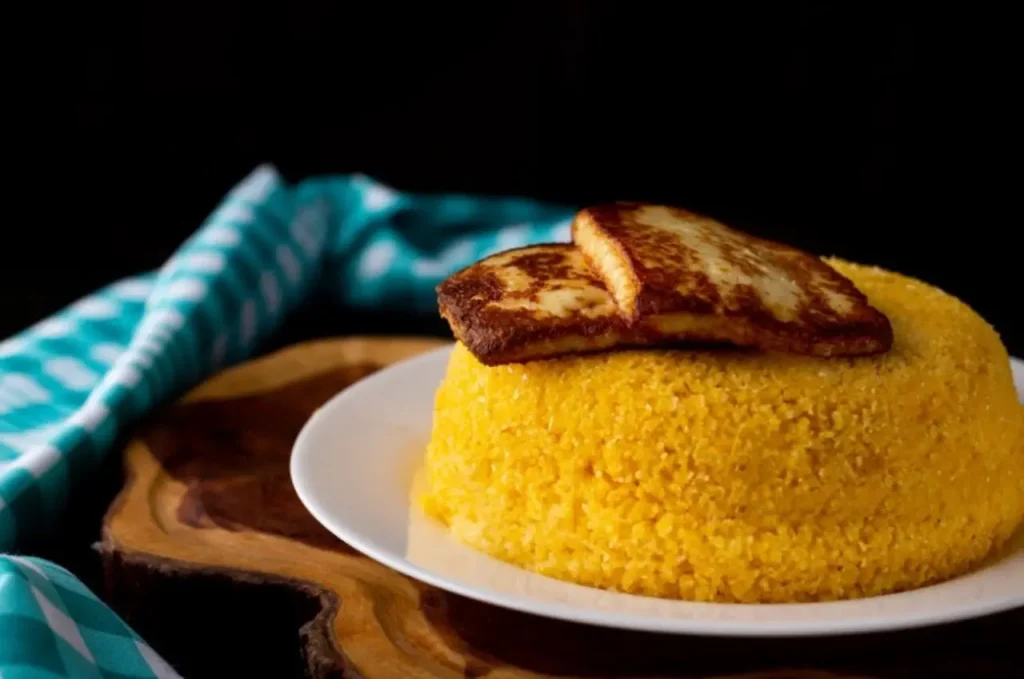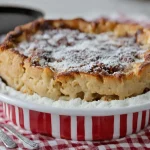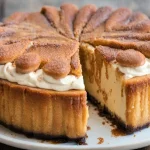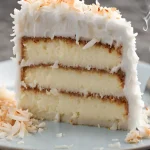Introduction to Fricassee Cake

The Unique World of Fricassee Cake Recipes
Fricassee Cake Recipes, a name that might conjure images of a savory dish, is in fact a sweet and tantalizing dessert. Originating from the vibrant culinary landscapes of North Africa, particularly Tunisia, this dessert is locally known as “fricassé.” What sets it apart is its intriguing preparation method, involving yeast dough, deep-frying, and a choice of fillings that range from sweet to savory, adding layers of flavor complexity.
Origins and Evolution
Fricassee Cake’s journey is as fascinating as its taste. Initially a staple in North African cuisine, it has traversed borders and undergone transformations, evolving into various versions worldwide. Each region adds its unique twist, making the fricassee cake a true culinary chameleon.
Understanding Fricassee
At its core, fricassee refers to a cooking method where food is sautéed and stewed in a sauce. However, in the context of this cake, it’s all about the unique combination of frying and sweetening, creating a delightful contrast.
Global Variations
The adaptability of fricassee cake is evident in its global variations. From sweet fruit-filled versions to savory meat-infused ones, this cake caters to all palates. For those interested in exploring other cake varieties, the Chocolate Cake with Cream Cheese Frosting offers a rich and indulgent experience.
In this journey of flavors, we’re not just exploring a recipe; we’re unraveling a story that spans continents and cultures. So, let’s dive into the world of fricassee cake, where every bite tells a tale of culinary evolution and innovation. And for those eager to embark on this sweet adventure, Happy Little Vegans offers a treasure trove of fricassee cake recipes to explore.
The Distinctive Texture of Fricassee Cake Recipes
Crafting the Texture: A Culinary Marvel
The texture of Fricassee Cake is a remarkable culinary achievement, striking a perfect balance between lightness and richness. This unique texture sets it apart from traditional cakes, which often lean towards being dense or heavy. Let’s delve into the elements that contribute to this delightful texture.
The Role of Yeast Dough
Firstly, the yeast dough is the cornerstone of the cake’s feather-light texture. This isn’t just any dough; it’s a magical blend that rises elegantly, creating delicate air pockets. Consequently, these pockets are responsible for the cake’s signature light and airy feel, making each bite a fluffy cloud of joy. Moreover, the yeast doesn’t just aid in rising; it also imparts a subtle, enchanting flavor.
Deep-Frying Technique
Furthermore, while baking is common for cakes, fricassee cake innovatively embraces deep-frying. This technique is a game-changer, ensuring the cake cooks swiftly and remains light. As a result, the cake avoids becoming dense or dry, a common issue with longer baking times. The outcome is a light and fluffy cake, crispy on the outside and soft on the inside, a texture that’s utterly irresistible.
Syrup or Glaze Infusion
Additionally, after frying, the cake often basks in a sweet syrup or glaze. This step is crucial as it not only adds moisture but also enhances the sweetness, perfectly complementing the fluffy texture. The syrup or glaze permeates every pore, ensuring each bite is moist and bursting with flavor.
In essence, the texture of fricassee cake is a testament to the art of baking and frying, showcasing how traditional methods can create something extraordinary. For those keen on exploring the deep-frying technique further, Pinterest’s collection on Bill Knapps Chicken Fricassee offers valuable insights and inspiration.
Variations of Fricassee Cake Recipes
Flavors that Dance on the Palate
Fricassee Cake is not just a treat for the eyes but also a festival of flavors for the palate. Its versatility in flavors and fillings makes it a unique dessert, adaptable to various tastes and preferences. Let’s explore some of these enchanting variations.
Sweet Symphony: Fruit-filled Variations
Firstly, the sweet variations of fricassee cake are a true symphony of flavors. Imagine biting into a cake filled with luscious fruits like apricots, dates, apples, or a fusion of fruits. Additionally, the inclusion of honey, orange blossom water, and cinnamon adds layers of depth and complexity to the sweetness. Each bite is a delightful journey through a garden of fruity flavors, making the cake not just a dessert but an experience.
Savory Notes: Meat and Vegetable Fillings
Moreover, venturing into the savory realm, some fricassee cakes embrace fillings like chicken, lamb, or seafood. Vegetables such as onions, peppers, and herbs add to the savory profile, crafting a cake that’s a culinary revelation. This savory twist transforms the cake from a sweet dessert into a hearty meal, perfect for those who prefer a less sugary option.
Neutral Elegance: Simple and Elegant Variations
Furthermore, for those who appreciate simplicity, some recipes feature a plain dough with minimal added sweetness. In this approach, the focus shifts to elements like syrup or glaze, allowing these flavors to shine. This minimalist version of the fricassee cake is an elegant choice, proving that sometimes, less is more.
In conclusion, the fricassee cake is a versatile dessert that caters to a wide range of tastes. Whether you prefer sweet, savory, or something in between, there’s a fricassee cake for everyone. For an innovative and delicious take on the savory fricassee cake, Yumtastic Recipes’ Fricassee Cake Recipe offers a delightful French-inspired blend.
Expert Tips for Perfect Fricassee Cake Recipes
Crafting the Perfect Fricassee Cake
Creating the perfect fricassee cake is an art that requires precision, patience, and a touch of creativity. Here are some expert tips to help you craft a fricassee cake that’s not just good, but great.
Selecting High-Quality Ingredients
First and foremost, the quality of ingredients plays a pivotal role in the final outcome of your cake. Opt for fresh fruits, rich spices, and high-quality oil for frying. These choices will significantly impact the taste and texture of your cake, elevating it from ordinary to extraordinary. Remember, the better the ingredients, the better the cake.
Mindful Frying Techniques
Next, when it comes to frying, mindfulness is key. Avoid overcrowding the pan, as this can lower the oil’s temperature, leading to a soggy cake. Instead, fry in batches to ensure each piece cooks evenly and maintains the perfect texture. This careful attention to frying will result in a cake that’s crispy on the outside and delightfully soft on the inside.
Precision in Cooking and Flavor Soaking
Moreover, precision in cooking time is crucial. Fricassee cakes cook quickly, so keep a watchful eye to prevent overcooking, which can lead to a dry or tough texture. After frying, let the cake soak in the syrup or glaze for at least an hour. This step is essential for allowing the cake to absorb the flavors fully, ensuring a moist and flavorful result. Patience here is key; the longer the cake soaks, the more flavorful it will be.
In essence, crafting the perfect fricassee cake is about balancing the right ingredients, techniques, and timing. With these expert tips, you’re well on your way to creating a fricassee cake that’s sure to impress.
FAQs about Fricassee Cake Recipes
Frequently Asked Questions
Fricassee Cake, with its unique preparation and diverse variations, naturally raises questions among baking enthusiasts and food lovers alike. Let’s address some of the most common queries to enhance your understanding and appreciation of this delightful dessert.
What Makes Something a Fricassee?
Traditionally, fricassee refers to a method of cooking where meat is sautéed and then stewed in a sauce. However, in the context of fricassee cake, it’s all about the unique combination of frying and sweetening. This method creates a distinctive texture and flavor profile, setting it apart from other cakes.
What is the Difference Between Saute and Fricassee?
Sauteing involves cooking food quickly in a small amount of oil or butter at a high temperature, whereas fricassee combines sautéing and stewing. In the case of fricassee cake, the term is more about the texture achieved through frying and the subsequent infusion of flavors through syrups or glazes.
What’s the Difference Between Stew and Fricassee?
While both stewing and fricasseeing involve cooking food slowly in liquid, stewing typically uses larger pieces of meat and vegetables, and the food is completely submerged in the liquid. Fricassee, on the other hand, usually starts with a sauté before adding liquid and often results in a thicker sauce.
What Types of Cake are There?
Cakes come in a myriad of types, each with its unique characteristics. From classic sponge cakes to rich chocolate cakes, fruit cakes, and even savory cakes like the fricassee cake, the world of cakes is vast and varied. Each type offers a different texture, flavor, and culinary experience.
Conclusion
A Culinary Gem Awaits: The Delight of Fricassee Cake
As we wrap up our exploration of the fricassee cake, it’s clear that this dessert is much more than just a sweet treat. It’s a culinary journey that spans continents, cultures, and cooking techniques, offering a unique experience with every bite.
Fricassee cake, with its light and airy texture achieved through the art of yeast dough and deep-frying, stands out in the world of desserts. Its ability to embrace both sweet and savory flavors makes it incredibly versatile, catering to a wide range of palates. Whether you’re indulging in a fruit-filled variation, savoring a savory meat-filled cake, or enjoying the simple elegance of a plain version, fricassee cake is sure to delight.
Moreover, the journey of making a fricassee cake is as rewarding as enjoying its flavors. From selecting the finest ingredients to mastering the frying technique and patiently allowing the cake to soak up the flavors, each step is crucial in crafting the perfect fricassee cake.
In conclusion, the fricassee cake is not just a dessert; it’s a testament to culinary creativity and tradition. It invites bakers and food enthusiasts to experiment, explore, and enjoy a dessert that’s truly unique. So, why not take this inspiration and embark on your own fricassee cake adventure? Remember, every bite tells a story of flavors, textures, and culinary artistry.




